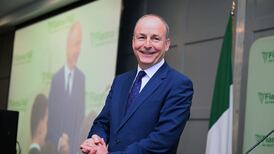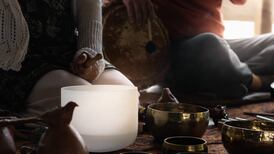During the 1965 general election campaign, a group of 41 members of the Foreign Press Association of London arrived in Ireland as guests of the government.
They included newspaper reporters from Russia, Italy, Holland and Germany; and they enjoyed, what was generously described as a “fatiguing eight-day tour” experiencing Ireland’s first ever television election.
Their schedule had a decidedly social element. There was a medieval banquet at Bunratty Castle, a visit to Inishbofin island and an evening of Irish culture in Dublin in the presence of poets, Austin Clarke and Padraic Colum. The schedule did include several after-Sunday Mass election meetings.
The electioneering, however, left the foreign correspondents underwhelmed. “The fire has gone out of your elections,” Werner Krug of the Munich Mercur observed, in contrasting the campaign with one he had previously experienced in 1957.
Setting the Bar High – Frank McNally on pubs called The Irish Times (and more songs about newspapers)
The Times they are a-name-checking – Frank McNally on songs about newspapers
Lexicographer at Large – Frank McNally on Dinneen’s Dictionary and the Dáil row about unparliamentary Irish
For Whom the Bells Toll – Frank McNally on the ups and downs of “sound baths”
The new domestic television service, Telefís Éireann, was just over three years on-air when taoiseach Seán Lemass called a general election for April 1965. More recently billed as the great economic moderniser, Lemass was hostile to the idea of public broadcasting. He favoured private sector ownership and no public money. He had only reluctantly supported a State-run service funded by a licence fee and advertising revenue.
Like many politicians in Leinster House, Lemass was also uncomfortable with the ramifications of the independence granted to the new broadcast station. He had little time for the niceties of editorial independence, and he saw the television service as another instrument to further his government’s agenda. He remained sensitive to reporting that he perceived to be less than positive in its assessment of the economy and Ireland’s international image.
Lemass was insistent that the national broadcaster avoid all election coverage.
He issued an explicit written instruction to the minister with responsibility for the broadcast services to make his view clear to Telefís Éireann.
Over time the new television station succeeded in delivering a professional political service but ambitions for more expansive coverage were not realised in time for the 1965 campaign.
The leaders of the three main parties – James Dillon of Fine Gael, Labour’s Brendan Corish and Lemass – undertook nationwide tours; Dillon’s campaign reportedly involved a 17-day 2,500 mile tour, and 25 meetings, that concluded with a final rally at the GPO in Dublin. Part of the event was filmed for the BBC’s Panorama programme. Twenty-four hours later, Lemass concluded the Fianna Fáil campaign with a similar rally at the same location.
The BBC cameras were not the only ones following the party leaders. As Dillon opined on farming to a gathering of some 200 people in Tipperary, his speech as recorded by a NBC crew. “Dillon speech filmed for American TV” was the headline over one newspaper story which apparently struggled to find a news-line in Fine Gael’s agriculture proposals. The following evening the American broadcasters were in Carlow to record Lemass’s election meeting.
The political correspondent of this newspaper sought to talk-up the contest. On the eve of polling day, he proclaimed that the campaign had “penetrated in every village and town – and almost every house . . .” This seemed to be a minority assessment. Having followed the leaders to various election rallies, the producers of BBC’s Panorama resorted to filming two university professors discussing the campaign in a pub in Dublin city centre. As a television spectacle, the encounter was described as “stage managed”, which somewhat appropriately was in keeping with the low-key tenor of the 1965 contest.
Neither the Fine Gael slogan “Time for a Change” nor the Fianna Fáil’s “Let Lemass Lead On” captured the public imagination. Labour had ruled out entering coalition with Fine Gael.
As such, voters were left with a limited choice – to give Lemass an overall majority or see him rule as head of a minority government.
The new domestic television service left few fingerprints on the 1965 campaign despite the fact that two in every five homes had a TV set by that time.
Station executives at Telefís Éireann were, however, more ambitious in delivering the first ever television election results programme.
In what was a significant investment for the new broadcaster, reporters were located at count centres in Monaghan, Wexford, Cork, Limerick, Galway, Sligo and Bolton Street in Dublin.
On the day of the count, the normal television schedule was replaced by a special programme which came on air at 5pm.
Radio stole a march, however, by starting its coverage at 2pm. Both services remained broadcasting until midnight, but – unlike what will be experienced in 2024 – there were no “special” or “additional” analysis programmes on the following day. Ongoing election developments were simply covered in regular news bulletins.















